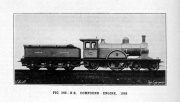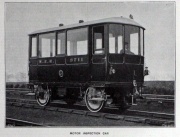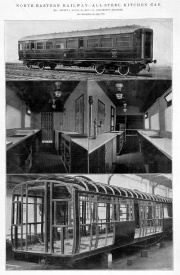Difference between revisions of "North Eastern Railway"
| (39 intermediate revisions by 5 users not shown) | |||
| Line 1: | Line 1: | ||
[[Image:Im1925EnV139-p536.jpg|thumb| 1864. ]] | [[Image:Im1925EnV139-p536.jpg|thumb| 1864. ]] | ||
[[image:Im1871ev12-p264.jpg|thumb|1871. Swing bridge over river Ouse, built by [[Pease, Hutchinson and Co]].]] | |||
[[Image:Im1925EnV139-p699.jpg|thumb| 1872-4. ]] | [[Image:Im1925EnV139-p699.jpg|thumb| 1872-4. ]] | ||
[[Image:Im1925EnV139-p700.jpg|thumb| 1874. ]] | [[Image:Im1925EnV139-p700.jpg|thumb| 1874. ]] | ||
[[Image:Im1925EnV139-p698.jpg|thumb| 1875-6. ]] | [[Image:Im1925EnV139-p698.jpg|thumb| 1875-6. ]] | ||
[[Image:Im1925EnV140-p258a.jpg|thumb| 1885. ]] | |||
[[Image:Im1925EnV140-p206d.jpg|thumb| 1887. ]] | |||
[[Image:Im1888EnV66-p352aa.jpg|thumb| 1888. ]] | [[Image:Im1888EnV66-p352aa.jpg|thumb| 1888. ]] | ||
[[Image:Im1925EnV140-p206e.jpg|thumb| 1888. ]] | |||
[[Image:Im1893EnV76-p406a.jpg|thumb| 1893. ]] | [[Image:Im1893EnV76-p406a.jpg|thumb| 1893. ]] | ||
[[image:Im1893Egv56-p140.jpg |thumb| 1893. Compound Express Passenger Locomotive. ]] | |||
[[image:Im1893Egv56-p141.jpg |thumb| 1893. Compound Express Passenger Locomotive. ]] | |||
[[Image:Im1894OurRail1-Engine3.jpg|thumb| Latest engine. Picture published in 1894. ]] | [[Image:Im1894OurRail1-Engine3.jpg|thumb| Latest engine. Picture published in 1894. ]] | ||
[[Image:Im1896EnV82-p610.jpg|thumb| 1896. Works at Gateshead.]] | [[Image:Im1896EnV82-p610.jpg|thumb| 1896. Works at Gateshead.]] | ||
| Line 14: | Line 20: | ||
[[Image:Im090619SR-NER.jpg|thumb| 1875. Exhibit at the [[Shildon Locomotion Museum]]. ]] | [[Image:Im090619SR-NER.jpg|thumb| 1875. Exhibit at the [[Shildon Locomotion Museum]]. ]] | ||
[[Image:Im1880EnV50-p368.jpg|thumb| 1880. Bridge over the river Wear at Sunderland.]] | [[Image:Im1880EnV50-p368.jpg|thumb| 1880. Bridge over the river Wear at Sunderland.]] | ||
[[image:Im1899TETv2-p239.jpg |thumb| 1899. Express Locomotive Designed by [[Wilson Worsdell]]. ]] | |||
[[image:Im1899TETv2-p237.jpg |thumb| 1899. Express Locomotive and Tender. ]] | |||
[[Image:Im1925EnV140-p394b.jpg|thumb| 1900-1. ]] | |||
[[Image:Im1901Eing-NER.jpg|thumb| 1901. ]] | [[Image:Im1901Eing-NER.jpg|thumb| 1901. ]] | ||
[[Image:Im1904MotAnn-NER.jpg|thumb| 1904. Omnibus running from Beverley to Driffield.]] | [[Image:Im1904MotAnn-NER.jpg|thumb| 1904. Omnibus running from Beverley to Driffield.]] | ||
| Line 27: | Line 35: | ||
[[image:Im1906EnV102-p424k.jpg|thumb| 1906.]] | [[image:Im1906EnV102-p424k.jpg|thumb| 1906.]] | ||
[[Image:Im1907EnV104-RailwayDynamo.jpg |thumb| Dynamometer Car-Measuring and Recording Mechanism. 1907. ]] | [[Image:Im1907EnV104-RailwayDynamo.jpg |thumb| Dynamometer Car-Measuring and Recording Mechanism. 1907. ]] | ||
[[image:Im1908aEng-NER.jpg|thumb| 1908. ]] | [[image:Im1908aEng-NER.jpg|thumb| 1908. ]] | ||
[[image:Im1908aEng-NER2.jpg|thumb| 1908. ]] | [[image:Im1908aEng-NER2.jpg|thumb| 1908. ]] | ||
| Line 44: | Line 51: | ||
[[Image:Im1909V107-p474a.jpg |thumb| 1909. ]] | [[Image:Im1909V107-p474a.jpg |thumb| 1909. ]] | ||
[[Image:Im1912EnV113-p489.jpg|thumb| 1912. ]] | [[Image:Im1912EnV113-p489.jpg|thumb| 1912. ]] | ||
[[Image:Im1913Eing-NER0.jpg|thumb| 1913. ]] | [[Image:Im1913Eing-NER0.jpg|thumb| 1913. ]] | ||
[[Image:Im1913Eing-NER3.jpg|thumb| 1913. ]] | [[Image:Im1913Eing-NER3.jpg|thumb| 1913. ]] | ||
| Line 52: | Line 58: | ||
[[image:Im19130915Loco-NER4.jpg|thumb| September 1913.]] | [[image:Im19130915Loco-NER4.jpg|thumb| September 1913.]] | ||
[[Image:Im1914EnV117-p016cb.jpg|thumb| 1914. ]] | [[Image:Im1914EnV117-p016cb.jpg|thumb| 1914. ]] | ||
[[Image:Im1914RAC-NER.jpg|thumb| 1914.]] | |||
[[Image:Im1915EnV119-p014ea.jpg|thumb| 1915. ]] | [[Image:Im1915EnV119-p014ea.jpg|thumb| 1915. ]] | ||
[[Image:Im1915EnV119-p482.jpg|thumb| 1915. ]] | [[Image:Im1915EnV119-p482.jpg|thumb| 1915. ]] | ||
[[Image:IM1916EnV122-p326a.jpg|thumb| 1916. ]] | [[Image:IM1916EnV122-p326a.jpg|thumb| 1916. ]] | ||
[[image:Im191705RlyM-NER.jpg|thumb| May 1917. ]] | [[image:Im191705RlyM-NER.jpg|thumb| May 1917. ]] | ||
[[Image:Im1918EnV127-p073.jpg|thumb| 1918. ]] | [[Image:Im1918EnV127-p073.jpg|thumb| 1918. ]] | ||
| Line 61: | Line 67: | ||
[[Image:Im1918EnV125-p010aa.jpg|thumb| 1918. ]] | [[Image:Im1918EnV125-p010aa.jpg|thumb| 1918. ]] | ||
[[image:Im1920EnV129-p014ca.jpg|thumb| 1919.]] | [[image:Im1920EnV129-p014ca.jpg|thumb| 1919.]] | ||
[[Image:Im1919EnV127-p404.jpg|thumb| 1919. ]] | |||
[[image:Im1920EnV130-p186.jpg|thumb| 1920.]] | |||
[[Image:Im1921EnV131-p014bba.jpg|thumb| 1921. ]] | [[Image:Im1921EnV131-p014bba.jpg|thumb| 1921. ]] | ||
[[Image:Im1921EnV131-p406a.jpg|thumb| 1921. ]] | [[Image:Im1921EnV131-p406a.jpg|thumb| 1921. ]] | ||
[[Image:Im1921EnV131-p406b.jpg|thumb| 1921. ]] | [[Image:Im1921EnV131-p406b.jpg|thumb| 1921. ]] | ||
[[Image:Immonk22.jpg|thumb| 1922. Steel for this engine was supplied by The [[Monk Bridge Iron and Steel Co]].]] | [[Image:Immonk22.jpg|thumb| 1922. Steel for this engine was supplied by The [[Monk Bridge Iron and Steel Co]].]] | ||
[[Image: | [[Image:Im1922v134-p274.jpg |thumb|1922. Express Passenger Electric Locomotive. [[Vincent Raven|Sir Vincent Raven. M.Inst. C.E.]]]] | ||
[[image:Im1923EnV135-p022b.jpg|thumb| 1922.]] | |||
[[image:Im1923EnV135-p022a.jpg|thumb| 1922. Electric locomotive.]] | |||
[[image:Im192301RM-NER.jpg|thumb| January 1923. ]] | [[image:Im192301RM-NER.jpg|thumb| January 1923. ]] | ||
[[Image:Im195703RM-NER.jpg |thumb| Mar 1957.Locomotive 62384 at Darlington and Stratford Works ]] | [[Image:Im195703RM-NER.jpg |thumb| Mar 1957.Locomotive 62384 at Darlington and Stratford Works ]] | ||
[[image:Im1963EnV216-p983c.jpg |thumb| 1963.]] | |||
[[image:Im1963EnV216-p983b.jpg |thumb| 1963.]] | |||
[[Image:Im100415-NER.jpg|thumb| Sign. ]] | [[Image:Im100415-NER.jpg|thumb| Sign. ]] | ||
[[Image:Im20100526Dumf-NER.jpg|thumb| ]] | [[Image:Im20100526Dumf-NER.jpg|thumb| ]] | ||
of York | of York | ||
of Gateshead Works | of [[Gateshead Works]], [[York Works]] | ||
The '''North Eastern Railway''' (NER), unlike many other of the pre-Grouping companies, had a relatively compact territory, having the district it covered to itself. That district extended through Yorkshire, Durham and Northumberland, with outposts in Westmorland and Cumberland. <ref>[http://en.wikipedia.org/wiki/North_Eastern_Railway_%28UK%29] Wikipedia</ref> | The '''North Eastern Railway''' (NER), unlike many other of the pre-Grouping companies, had a relatively compact territory, having the district it covered to itself. That district extended through Yorkshire, Durham and Northumberland, with outposts in Westmorland and Cumberland. <ref>[http://en.wikipedia.org/wiki/North_Eastern_Railway_%28UK%29] Wikipedia</ref> | ||
It formed the middle link between London and Edinburgh, joining the [[Great Northern Railway]] near Doncaster and the [[North British Railway]] at Berwick-upon-Tweed. | It formed the middle link between London and Edinburgh, joining the [[Great Northern Railway]] near Doncaster and the [[North British Railway]] at Berwick-upon-Tweed. | ||
1854 Incorporation took place. | 1854 Incorporation took place. The constituent parts of the NER were: | ||
* [[York, Newcastle and Berwick Railway]] 1854 | * [[York, Newcastle and Berwick Railway]] 1854 | ||
* [[York and North Midland Railway]] 1854 | * [[York and North Midland Railway]] 1854 | ||
| Line 89: | Line 100: | ||
* [[Stockton and Darlington Railway]] 1863 | * [[Stockton and Darlington Railway]] 1863 | ||
* [[West Hartlepool Railway]] 1865 | * [[West Hartlepool Railway]] 1865 | ||
1854 [[Thomas Elliot Harrison]] was appointed chief engineer. | |||
York station (York) was the hub of the system, and the headquarters of the line was located here. | York station (York) was the hub of the system, and the headquarters of the line was located here. | ||
1877 The basis for the present station was opened on June 25 | From 1860 the NER was a partner (with the [[North British Railway]] and the [[Great Northern Railway]]) in the [[East Coast Joint Stock]] operation. | ||
1877 The basis for the present York station was opened on June 25. Until the advent of modern signalling, the 295-lever box was the largest manually-worked signal box in Britain. | |||
Newcastle Central station (Newcastle) (which had opened on August 29 1850) became the largest on the NER. Other principal stations were located at Sunderland, Darlington and Hull. The station at Leeds was a joint undertaking with the London and North Western Railway. | |||
1875 See [[1875 Number of Locomotives]] where the NER are listed second with 1,331 locomotives. | |||
1882 [[Alexander McDonnell]] appointed locomotive superintendent | |||
1885 [[Thomas William Worsdell]] was appointed locomotive superintendent | |||
1888 See [[Locomotive Stock June 1888]] where the NER are listed second with 1,506 locomotives. | |||
1888 Thomas Harrison died. | |||
1890 [[Wilson Worsdell]] was appointed locomotive superintendent (title was changed to Chief Mechanical Engineer in 1902). | |||
1891 [[George Gibb]] was appointed as general manager in succession to [[Henry Tennant]] | |||
1904 The NER was the first main line rail company in Britain to adopt electric traction (the [[Lancashire and Yorkshire Railway]] followed about one week later). The lines converted were known as Tyneside Electrics: | |||
The NER was the first main line rail company in Britain to adopt electric traction (the Lancashire and Yorkshire Railway followed about one week later). The lines converted were known as Tyneside Electrics: | |||
* Newcastle Central via Wallsend and Whitley Bay to Gosforth | * Newcastle Central via Wallsend and Whitley Bay to Gosforth | ||
* Newcastle Central to Benton | * Newcastle Central to Benton | ||
* the Riverside Loop from Byker to Percy Main | * the Riverside Loop from Byker to Percy Main. | ||
[[BTH]] had the contract to supply electrical equipment for motor units, carriages and laying of third rail. [[British Westinghouse]] received a contract for switchboards, transformers and sub-stations <ref>The Times, 31 January 1903</ref>. Electric Multiple Units were built at York Carriage Works for service on the north bank of the Tyne. Electrical equipment was supplied by '''British Thomson-Houston Co.''', and fitted at York Works. | |||
1904 Shortly after the electrification of the Tyneside passenger lines the NER decided to electrify the Newcastle Quayside branch as well. Two electric locomotives (Nos. 1 & 2) were built to operate the branch in 1905. The frames and bodies were constructed by [[Brush Electrical Engineering Co|Brush Engineering]] in Loughborough, who acted as sub-contractors to '''British Thomson-Houston Co''' who supplied the electrical equipment. The track was fitted with a third rail in the tunnels where there was insufficient overhead clearance. For safety reasons, overhead conductors were used in the yards at each end of the branch. | |||
1905 Electrical operations of the Quayside branch began on 5th June 1905. | |||
1908 The company owned 1,650 miles of lines. <ref>The Stock Exchange Year Book 1908</ref> | |||
1910 [[Vincent Raven]] appointed chief mechanical engineer | |||
1913-16 Electrification of the Shildon-Newport line<ref>See [[The Engineer 1916/06/02]] for a description of the electrification scheme</ref>. The LNER electrified further lines in 1938. | |||
The NER carried a larger tonnage of mineral and coal traffic than any other principal railway. | The NER carried a larger tonnage of mineral and coal traffic than any other principal railway. | ||
The NER was a | The NER was the first railway company in the world to appoint a full-time salaried architect to work with its chief engineer in constructing railway facilities. Some of the men appointed were based in, or active in, Darlington. | ||
* [[Thomas Prosser]] held the position from 1854 to 1873. He worked in Newcastle | |||
* [[Benjamin Burleigh]], died after only two years in post. | |||
* [[William Peachey]] who followed Burleigh for an equally brief period of office, was based in Darlington. | |||
* [[William Bell]] worked for the NER for fifty years and was chief architect between 1877 and 1914. | |||
* [[Arthur Pollard]] was in post briefly | |||
* [[Stephen Wilkinson]] then filled the position of chief architect briefly, before the merger of 1923 into the LNER led to the abolition of the department. | |||
The company owned the following docks: | The company owned the following docks: | ||
| Line 122: | Line 155: | ||
* [[Hartlepool Docks]]: acquired 1865. A large timber trade | * [[Hartlepool Docks]]: acquired 1865. A large timber trade | ||
* [[Tyne Dock]]: opened by NER in 1859. Timber and coal exports | * [[Tyne Dock]]: opened by NER in 1859. Timber and coal exports | ||
* [[Middlesbrough Dock]]: Opened in 1842. Iron and steel exports; and a world-wide trade in other goods. | * [[Middlesbrough Docks|Middlesbrough Dock]]: Opened in 1842. Iron and steel exports; and a world-wide trade in other goods. | ||
The NER also owned coal-shipping staithes at Blyth and Dunston-on-Tyne. | The NER also owned coal-shipping staithes at Blyth and Dunston-on-Tyne. | ||
1923 | 1920 [[Alexander Butterworth |Sir Alexander Kaye Butterworth]] was general manager. <ref>The Engineer 1920/12/17</ref> | ||
1922 Amalgamated the [[Hull and Barnsley Railway]] | |||
1923 The company was absorbed into the [[London and North Eastern Railway]] at the Grouping. | |||
---- | |||
* See also The North Eastern Railway in '''One Hundred Years of British Railways''' in The Engineer - [[The Engineer 1924/10/31]] | |||
== See Also == | == See Also == | ||
| Line 133: | Line 175: | ||
<references/> | <references/> | ||
{{DEFAULTSORT: | {{DEFAULTSORT: }} | ||
[[Category: Town - York]] | [[Category: Town - York]] | ||
[[Category: Shipping Companies ]] | [[Category: Shipping Companies]] | ||
[[Category:Railway Companies]] | [[Category: Railway Companies]] | ||
Revision as of 12:06, 23 February 2020





of York
of Gateshead Works, York Works
The North Eastern Railway (NER), unlike many other of the pre-Grouping companies, had a relatively compact territory, having the district it covered to itself. That district extended through Yorkshire, Durham and Northumberland, with outposts in Westmorland and Cumberland. [1]
It formed the middle link between London and Edinburgh, joining the Great Northern Railway near Doncaster and the North British Railway at Berwick-upon-Tweed.
1854 Incorporation took place. The constituent parts of the NER were:
- York, Newcastle and Berwick Railway 1854
- York and North Midland Railway 1854
- Leeds Northern Railway 1854
- Malton and Driffield Railway 1854
- York and North Midland Railway 1862
- South Durham and Lancashire Union Railway 1862
- Stockton and Darlington Railway 1863
- West Hartlepool Railway 1865
1854 Thomas Elliot Harrison was appointed chief engineer.
York station (York) was the hub of the system, and the headquarters of the line was located here.
From 1860 the NER was a partner (with the North British Railway and the Great Northern Railway) in the East Coast Joint Stock operation.
1877 The basis for the present York station was opened on June 25. Until the advent of modern signalling, the 295-lever box was the largest manually-worked signal box in Britain.
Newcastle Central station (Newcastle) (which had opened on August 29 1850) became the largest on the NER. Other principal stations were located at Sunderland, Darlington and Hull. The station at Leeds was a joint undertaking with the London and North Western Railway.
1875 See 1875 Number of Locomotives where the NER are listed second with 1,331 locomotives.
1882 Alexander McDonnell appointed locomotive superintendent
1885 Thomas William Worsdell was appointed locomotive superintendent
1888 See Locomotive Stock June 1888 where the NER are listed second with 1,506 locomotives.
1888 Thomas Harrison died.
1890 Wilson Worsdell was appointed locomotive superintendent (title was changed to Chief Mechanical Engineer in 1902).
1891 George Gibb was appointed as general manager in succession to Henry Tennant
1904 The NER was the first main line rail company in Britain to adopt electric traction (the Lancashire and Yorkshire Railway followed about one week later). The lines converted were known as Tyneside Electrics:
- Newcastle Central via Wallsend and Whitley Bay to Gosforth
- Newcastle Central to Benton
- the Riverside Loop from Byker to Percy Main.
BTH had the contract to supply electrical equipment for motor units, carriages and laying of third rail. British Westinghouse received a contract for switchboards, transformers and sub-stations [2]. Electric Multiple Units were built at York Carriage Works for service on the north bank of the Tyne. Electrical equipment was supplied by British Thomson-Houston Co., and fitted at York Works.
1904 Shortly after the electrification of the Tyneside passenger lines the NER decided to electrify the Newcastle Quayside branch as well. Two electric locomotives (Nos. 1 & 2) were built to operate the branch in 1905. The frames and bodies were constructed by Brush Engineering in Loughborough, who acted as sub-contractors to British Thomson-Houston Co who supplied the electrical equipment. The track was fitted with a third rail in the tunnels where there was insufficient overhead clearance. For safety reasons, overhead conductors were used in the yards at each end of the branch.
1905 Electrical operations of the Quayside branch began on 5th June 1905.
1908 The company owned 1,650 miles of lines. [3]
1910 Vincent Raven appointed chief mechanical engineer
1913-16 Electrification of the Shildon-Newport line[4]. The LNER electrified further lines in 1938.
The NER carried a larger tonnage of mineral and coal traffic than any other principal railway.
The NER was the first railway company in the world to appoint a full-time salaried architect to work with its chief engineer in constructing railway facilities. Some of the men appointed were based in, or active in, Darlington.
- Thomas Prosser held the position from 1854 to 1873. He worked in Newcastle
- Benjamin Burleigh, died after only two years in post.
- William Peachey who followed Burleigh for an equally brief period of office, was based in Darlington.
- William Bell worked for the NER for fifty years and was chief architect between 1877 and 1914.
- Arthur Pollard was in post briefly
- Stephen Wilkinson then filled the position of chief architect briefly, before the merger of 1923 into the LNER led to the abolition of the department.
The company owned the following docks:
- Hull Docks: acquired 1893. Dealt with a large variety of cargoes, including grain, seed and fruit
- Hartlepool Docks: acquired 1865. A large timber trade
- Tyne Dock: opened by NER in 1859. Timber and coal exports
- Middlesbrough Dock: Opened in 1842. Iron and steel exports; and a world-wide trade in other goods.
The NER also owned coal-shipping staithes at Blyth and Dunston-on-Tyne.
1920 Sir Alexander Kaye Butterworth was general manager. [5]
1922 Amalgamated the Hull and Barnsley Railway
1923 The company was absorbed into the London and North Eastern Railway at the Grouping.
- See also The North Eastern Railway in One Hundred Years of British Railways in The Engineer - The Engineer 1924/10/31














































































